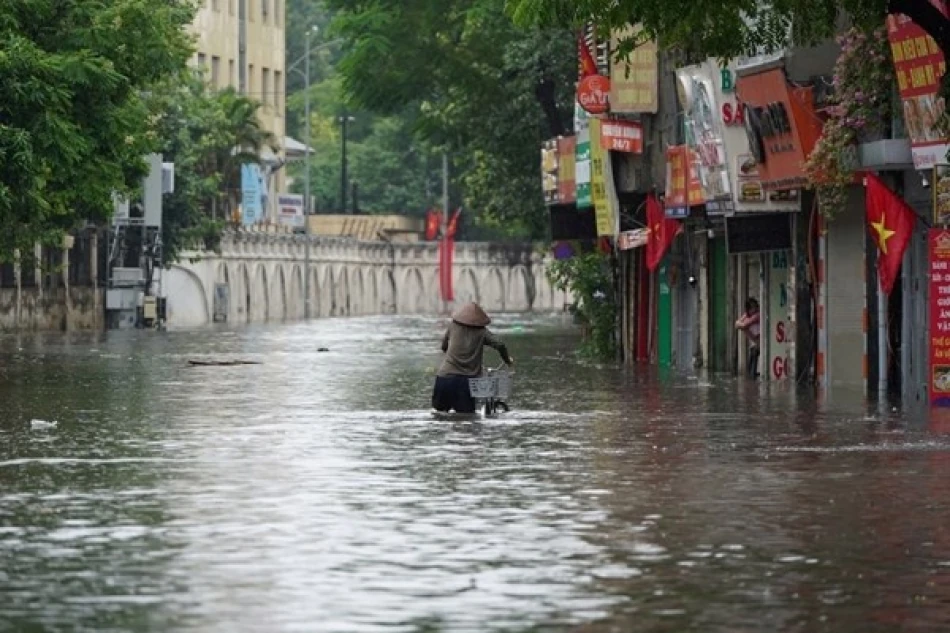
فيضانات وانهيارات في فيتنام وتايلاند
Tropical Storm Kajiki Claims Eight Lives Across Southeast Asia as Climate Vulnerabilities Expose Regional Infrastructure Gaps
At least eight people have died and dozens more injured as Tropical Storm Kajiki unleashed devastating floods and landslides across Vietnam and Thailand this Wednesday, highlighting Southeast Asia's growing vulnerability to extreme weather events that are becoming increasingly frequent and destructive in the region.
Vietnam Bears the Brunt of Storm's Fury
Vietnam suffered the heaviest casualties, with seven confirmed deaths and one person still missing after torrential rains triggered widespread flooding across northern and central provinces. The storm left 34 people injured as communities struggled to cope with rapidly rising water levels and infrastructure damage.
The casualties underscore Vietnam's particular susceptibility to tropical storms, which regularly batter the country's long coastline during the monsoon season. The nation faces an average of 6-10 major storms annually, making it one of the world's most disaster-prone countries according to climate risk assessments.
Thailand Grapples with Deadly Landslides
In northern Thailand, the mountainous terrain around Chiang Mai proved especially dangerous, where one person died and another remains missing following a catastrophic landslide. The Thailand Department of Disaster Prevention and Mitigation reported significant property damage, with several homes destroyed and multiple residents injured across the country's northern provinces.
Thai meteorological authorities have issued continued rainfall warnings for northern and northeastern regions, suggesting the crisis may not yet be over. The hilly geography of northern Thailand makes these areas particularly vulnerable to landslides during intense rainfall events.
Storm Kajiki's Destructive Path
The tropical storm initially made landfall in central Vietnam on Monday, prompting authorities to evacuate thousands of residents from high-risk coastal and low-lying areas. The evacuation efforts likely prevented a much higher death toll, demonstrating the importance of early warning systems that both Vietnam and Thailand have been developing in recent years.
Regional Climate Patterns Signal Growing Risks
This latest disaster fits into a troubling pattern of intensifying weather events across Southeast Asia. Climate scientists have noted that warming ocean temperatures in the South China Sea and changing monsoon patterns are creating conditions for more powerful and unpredictable storms.
The economic implications extend beyond immediate disaster response costs. Both Vietnam and Thailand are major agricultural exporters and manufacturing hubs, with supply chains that can be severely disrupted by extreme weather events. Vietnam's growing role in global electronics manufacturing and Thailand's position as a regional logistics center mean that such storms increasingly have international economic ripple effects.
Infrastructure Investment Becomes Critical Priority
The casualties and damage from Storm Kajiki highlight the urgent need for improved disaster resilience infrastructure across Southeast Asia. While both countries have made progress in early warning systems, the persistent vulnerability to floods and landslides suggests that drainage systems, flood barriers, and slope stabilization projects require accelerated investment.
International development banks and climate financing mechanisms are likely to face increased pressure to support adaptation projects in the region, as the frequency and intensity of such storms are projected to increase over the coming decades.
 Layla Al Mansoori
Layla Al Mansoori







